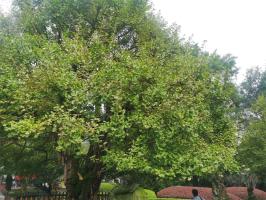Introduction
Climate change is an ongoing issue affecting the entire planet, with devastating effects on ecosystems, wildlife, and human health. One way to combat the negative impacts of climate change is through tree planting. Trees are a powerful natural tool for capturing carbon dioxide, promoting biodiversity, and mitigating the impacts of climate change. In this article, we will explore why planting trees is good for climate change and how it can help reduce the effects of global warming.
Trees as Carbon Sinks
Trees have a significant impact on the carbon cycle, as they absorb carbon dioxide from the air and store it in their biomass. Trees act as carbon sinks, capturing carbon dioxide from the atmosphere and converting it into organic matter. By doing so, trees help mitigate the effects of greenhouse gas emissions and absorb carbon that would otherwise contribute to global warming. In fact, a single mature tree can absorb up to 48 pounds of carbon dioxide per year. This makes tree planting an effective way to fight climate change and reduce the concentration of carbon dioxide in the atmosphere.
Promoting Biodiversity
Planting trees also plays an important role in promoting biodiversity. Trees provide a habitat for a variety of species, including birds, insects, and mammals. By planting trees, we not only create new habitats for animals but also help protect existing ecosystems. Biodiversity is important for the stability of ecosystems and contributes to the provision of ecosystem services such as pollination, water filtration, and nutrient cycling. Maintaining biodiversity is essential for supporting life on Earth and protecting future generations from the impacts of climate change.
Reducing the Effects of Climate Change
Planting trees can also help reduce the effects of climate change by mitigating the consequences of extreme weather events. Trees provide shade and reduce heat island effects, helping to keep cities and towns cooler during heatwaves. They also help prevent soil erosion and land degradation, which can be exacerbated by heavy rainfall and flooding. Trees help regulate water cycles and reduce the risk of droughts and water shortages. By planting trees, we can reduce the impact of extreme weather events and help protect communities from the effects of climate change.
The Importance of Sustainable Tree Planting
While planting trees is a powerful tool for combating climate change, it is important to ensure that tree planting is done in a sustainable way. This means planting trees that are native to the local environment and that are adapted to local climate conditions. It also means ensuring that trees are planted in areas where they can thrive and contribute to local ecosystems. Planting trees in the wrong location can have negative impacts such as reducing water availability, leading to soil degradation, and negatively impacting local biodiversity. Therefore, it is important to carefully plan tree planting initiatives and to work with local communities to ensure that tree planting is done in a sustainable and responsible manner.
Conclusion
Planting trees is a powerful natural tool for combating climate change and mitigating its impacts. Trees act as carbon sinks, promote biodiversity, and help reduce the effects of extreme weather events. However, it is important to plant trees in a sustainable and responsible manner to ensure that their benefits outweigh any negative impacts. Tree planting initiatives can contribute to the global fight against climate change and provide a positive impact on local ecosystems and communities.

 how many times do yo...
how many times do yo... how many planted tre...
how many planted tre... how many pine trees ...
how many pine trees ... how many pecan trees...
how many pecan trees... how many plants comp...
how many plants comp... how many plants can ...
how many plants can ... how many plants and ...
how many plants and ... how many pepper plan...
how many pepper plan...






























